In his two years as the head of the Wayne State SMASH program, a weekslong summer residency initiative that serves up a technology-heavy curriculum to its high school participants, John Ray has heard the occasional argument about the supposed social neutrality of the scientific method, the racial indifference of mathematics, the cultural blindness of technological engineering.
Science, say some, is just science, and any ethnic or racial diversity of its practitioners ought to matter little, if at all.
Ray, however, doesn’t have to look past his own cellphone to refute those propositions.
“I tell the kids in our program — many of whom are African American — just look at your Snapchat filters and you can see that wasn’t built for us and that we didn’t create it,” he said during a recent conversation before the start of a SMASH class in Old Main, the hub of much of the group’s summer activity. “They realize that when they have to look to find a certain type of lighting because that technology wasn’t built to readily identify our skin tones and our skin color. And that makes them think: If they were behind that, then they would automatically take into consideration things like being darker skinned or having darker-skinned friends or family.
“But they are literally left out because the people who are making this technology don’t look like them and don’t think about them when they’re designing.”
Ray said he has made it his mission to ensure that these children, and others like them, are never left out again when it comes to STEM.
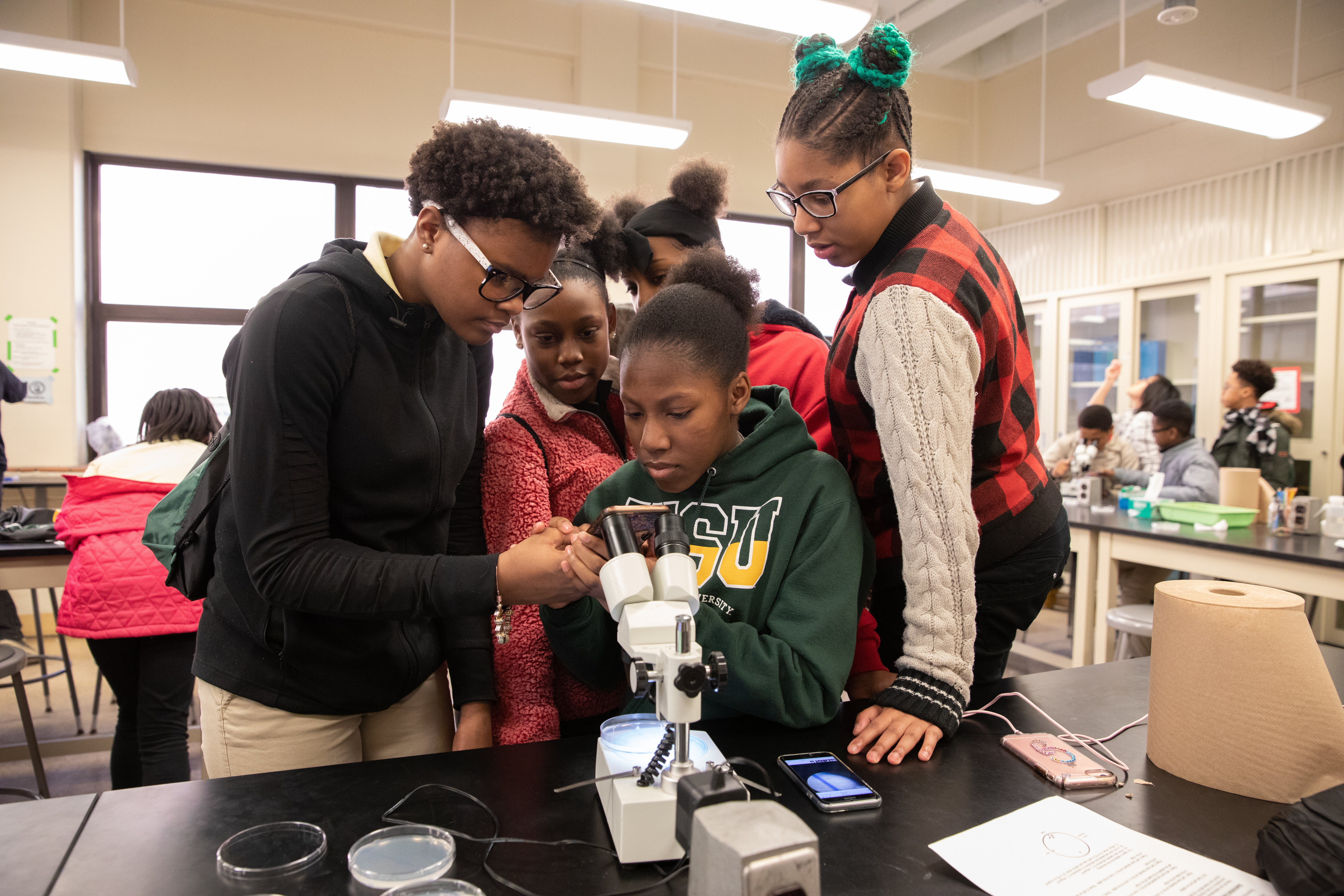
“In the Detroit region, since most of our population is minority — we’re 80% or so black in the city — if you don’t create opportunities for black and brown folks in this city, what does that really mean for the majority of population in this space if they are not going to be ready for the workforce?” he asks. “What does that mean for education? What does that mean for society? We’ve literally failed an entire population if we aren’t preparing them for that.
“That’s one big reason why programs like SMASH are so important: so that they can get introduced, exposed and engaged to computer science, and technology, to STEM, because that’s just the way that our workforce is moving and shifting. We cannot leave out a huge majority of our population.”
A look around campus proves that Ray is not alone in this thinking — or his proactive approach. The SMASH program is just one of a growing multitude of science, technology, engineering and mathematics initiatives — for future college students as well as current ones — that the university backs as part of an ever-expanding effort to dramatically increase diversity in the various STEM fields and to use largely homegrown talent to do so. Rooted in the university’s overall commitment to educational equity, WSU’s push to open 21st century STEM education to students of color, young women, economically disadvantaged children and other oft-underrepresented groups is resulting in bold hires, extended community outreach as well as a growing raft of collaborations with public schools, nonprofits, tech giants and corporate leaders.
“Along with the programs we have for current university students, Wayne State is doing so much more in the K-12 space than people actually know,” said newly minted Associate Provost for Inclusive Workforce Development Tonya Matthews, Ph.D., a one-time president and CEO of the Michigan Science Center who joined the university in early 2019. “Part of that is because we have so many committed individuals, be it faculty and staff, deans and chairs, who are working in many different kinds of ways: some grant-funded, some department-funded, some community collaboration. One of my immediate goals is to be able to shout about the huge numbers of K-12 folks that are coming here and getting their first taste of university, their first taste of STEM, their first taste of their possibility through Wayne State.”
A plethora of programs
And students are getting those tastes all over campus and beyond. Even as programs like SMASH zero in on technology, a wide range of university efforts — some recent, some stretching back decades — have unfolded across a rich assortment of other STEM disciplines.
For instance, in early summer, Wayne State partnered with Quicken Loans to sponsor CodeDetroit, a computer coding initiative targeting 2,000 Detroit public school students that is run out of Durfee Middle School. The university also works closely with a national organization known as Black Girls Code, which promotes computer science education among young African American women.
Meanwhile, for the past 14 years, the university has sponsored a “summer science academy” that draws 500 students between ages 7 and 17 to teach them how to make their own webpages, create their own video games and engineer smartphone applications, among other skills.
“We have shown them everything from creating the app to putting it in the Google Play store,” said Jasmine Roberson, director of community engagement and outreach program specialist for the College of Engineering. “We have even had students actually take their phone apps to market.”
Along with the summer academy, the university also has maintained a 40-plus-year relationship with one of the oldest and most successful local STEM efforts in existence, the Detroit Area Pre-College Engineering Program (DAPCEP), which was founded in 1976.
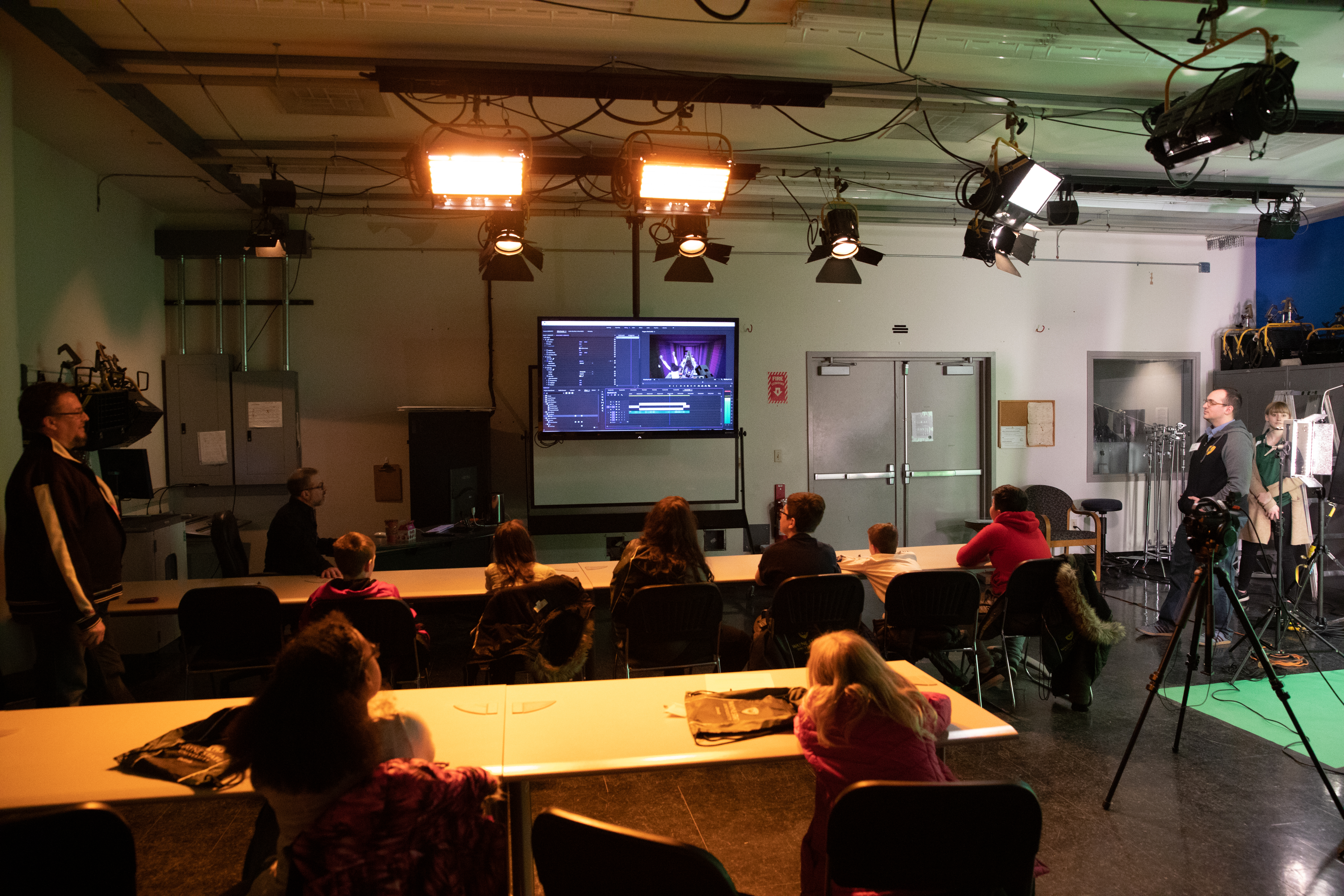
As part of its DAPCEP partnership, Wayne State twice a year brings 300 Detroit public school students to campus on Saturdays to work with engineering alumni. University instructors also use DAPCEP to partner with teachers in the Detroit Public Schools Community District to provide science instruction. And WSU participates in DAPCEP’s annual expo designed to provide Detroit families information about how their children can pursue science education in college.
“We’ve been part of DAPCEP from very early on,” said Roberson. “I can remember Wayne State being involved even when I was in high school. This is one of our oldest and most cherished partnerships, and it’s been very effective over the years in creating an interest in engineering in young people from Detroit.”
Wayne State also collaborates with tech giant Microsoft as part of the company’s TEALS program, which permits tech industry professionals to serve as volunteer teachers each week in public schools suffering a shortage of teachers and equipment. Through TEALS, which stands for Technology Education and Literacy in Schools, students learn about coding, computer science, cybersecurity and more.
Computer coding is also the nucleus of the university’s partnership with the Black Girls Code effort. Both WSU’s College of Education and its College of Engineering have struck up relationships with Black Girls Code over the past decade.
Meanwhile, the six-week SHAPE (Summer High-School Apprenticeship Program in Engineering) program, also run out of the College of Engineering, aims to educate underrepresented students in emergency energy technologies and 3D modeling.
Students are taught mechanical engineering concepts and skills like material synthesis, battery design and mechanical testing.
One of the biggest events that spotlights the university’s commitment is Wayne State STEM Day, a daylong showcase designed to expose the hundreds of students who attend each year to the wonders of science and technology.
Associate Marketing Director Julie Hasse, who coordinates STEM Day, noted that while the event is open to all students, she remains mindful of reflecting diversity both in the attendees as well as the participants whose work and expertise are spotlighted: “It’s very important to have a wide array of people. We aim to get students, staff, faculty and anyone who is a subject matter expert.”
Why diversity matters
Along with the formal programs, the campus is teeming with professors, student and professional groups, staff, and administrators who have taken even more personal interests in promoting diversity and encouraging students of color to pursue STEM careers.
“We have individual faculty members who, through single grants sometimes, are stewarding 10 or 15 students in these amazing ways,” said Matthews, herself a biomedical engineer who has founded the STEMinista Project, an initiative that supports middle school girls in exploring STEM careers. “That cannot be discounted.”
WSU Engineering Professor Howard Matthew, Ph.D., a chemical engineer whose research focuses on bio- medical advancements, talks warmly about how he often tries to open his lab to allow high school students — most of them African American, African and Middle Eastern — to come in and work on research projects with the grad students he oversees.
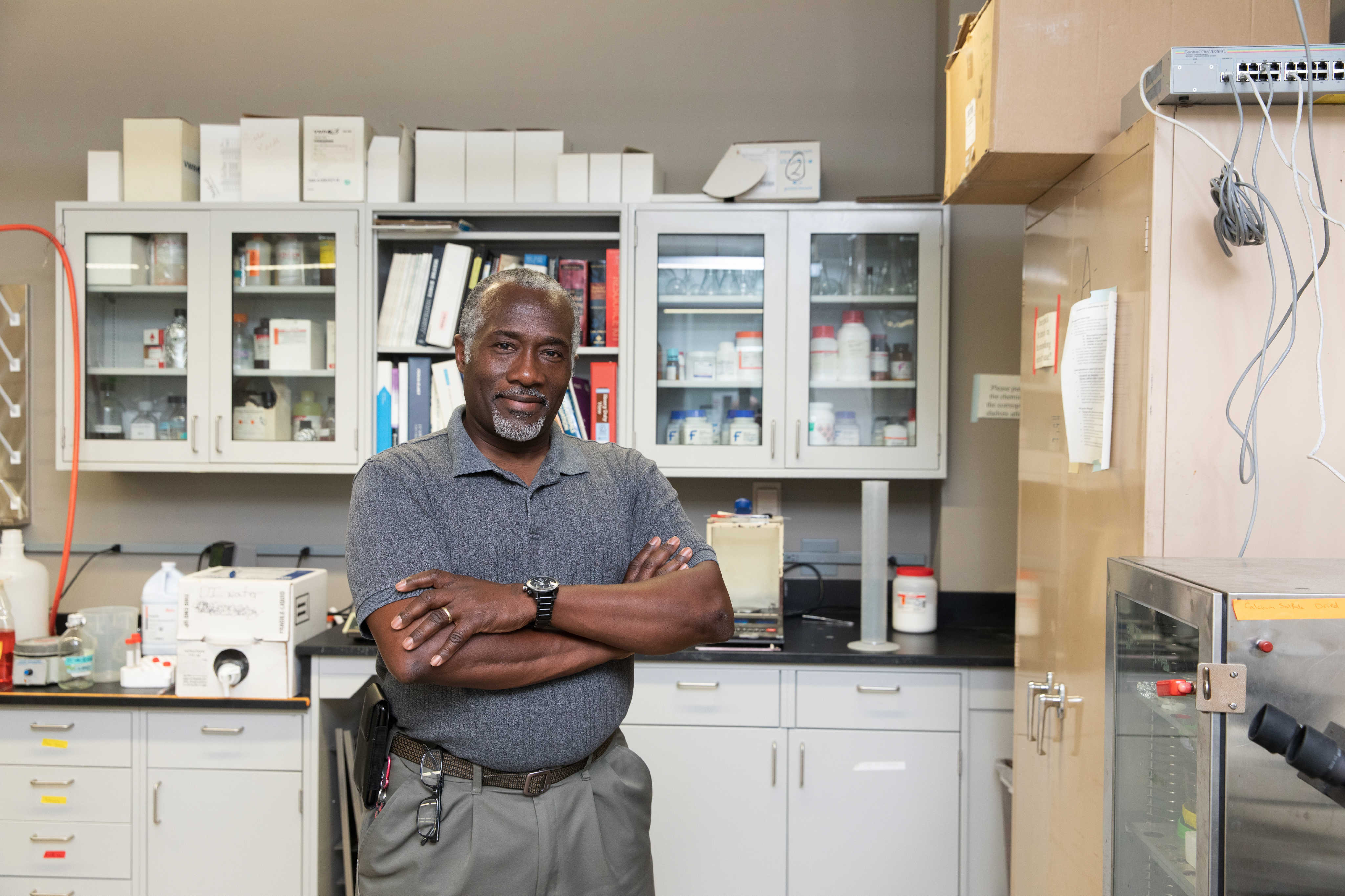
“It’s definitely important to get a multiplicity of ideas any time you’re dealing with societal issues,” said Matthew. “Be it health issues, medical issues, pretty much any issues that affect multiple people or any issues that are particularly difficult and challenging — you want to have a broad range of people looking at those challenges. The more important the problem, the more ideas and minds you need applied to it. Because people, based on their backgrounds, come at a problem with a different mindset, different view. Things that group A may take for granted, group B will say, ‘Well, that’s not how it works where I come from.’”
One hope is that increased inclusion will mean a high-tech world that everyone can work in — and that works for everyone. Right now, many say, that’s not the case. Ticking off examples of how a lack of diversity in STEM has led to tech that often performs unevenly, if at all, for some racial/ethnic groups, diversity advocates cite failed social media filters, high-tech soap and paper towel dispensers whose sensors have difficulties detecting darker skin, and facial recognition technology that can’t distinguish African American faces from one another.
“In a more diverse tech world,” said Ray, “you’d have people who could say, ‘Oh, I’m darker skinned,’ or ‘I have a fairer- skinned friend,’ and they would take those considerations into play much more easily and automatically — and that literally benefits us all because we have different shades whether you’re black, brown, Asian, whatever the case might be.”
Seeing success
The efforts go beyond just the university units focused expressly on science, too. The WSU College of Education recently hosted the 55th annual regional Junior Science & Humanities Symposium (JSHS), a national program supported by the U.S. Army and administrated by the National Science Teachers Association. Last year marked the inaugural year for the College of Education’s Upward Bound program and for a partnership funded by the Army Education Outreach Program to promote the participation in both the JSHS and STEM research to underrepresented high schoolers.
In March 2019, 33 students from high schools across Michigan presented research projects at the JSHS, including 17 students from the college’s Upward Bound program, which also focuses on underserved students from disadvantaged groups.
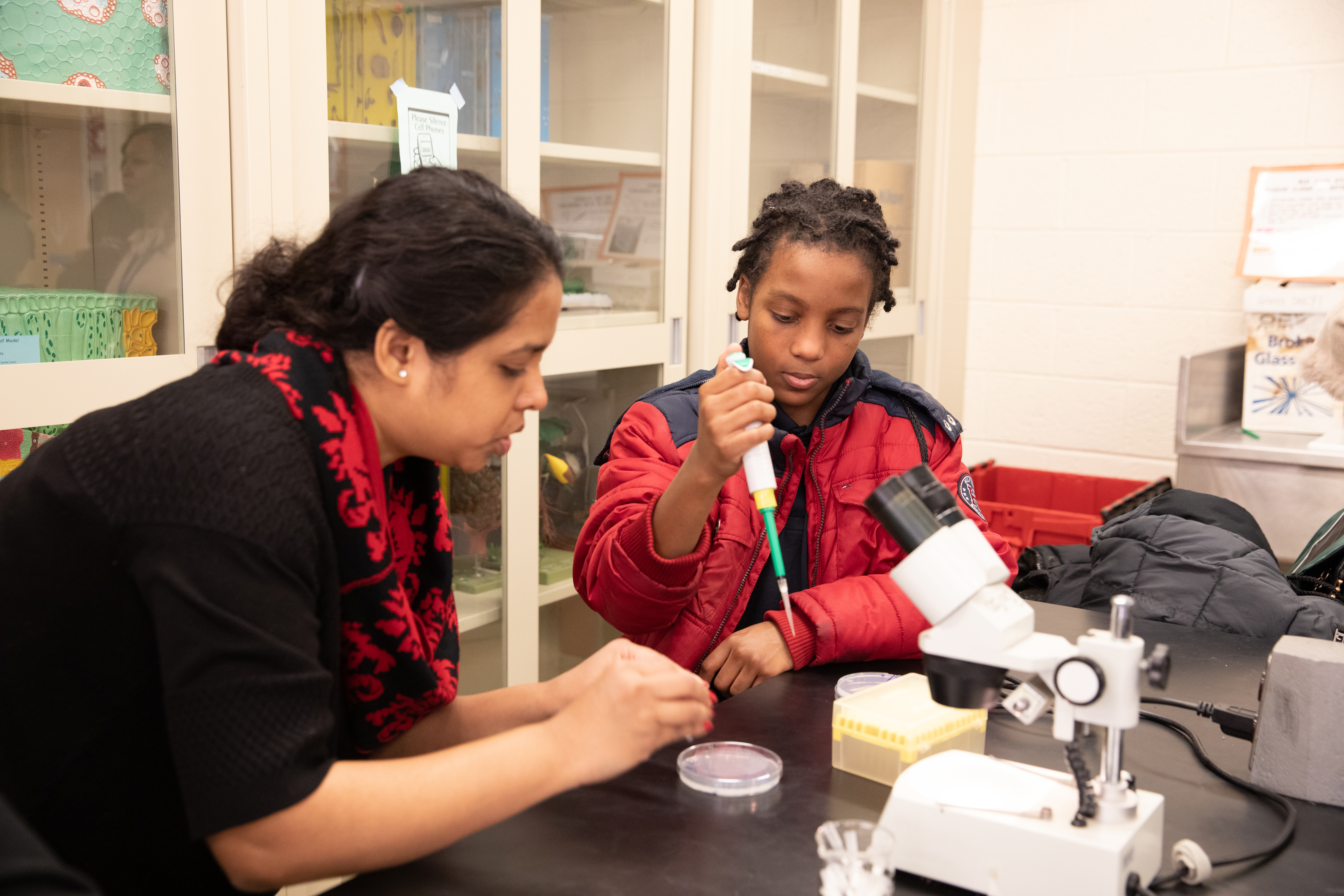
“This partnership between the JSHS and Upward Bound was extremely successful at engaging underrepresented and underserved students in comparison with the previous year’s regional JSHS,” said WSU Assistant Professor Sandra Yarema, who coordinates the science education program at the university.
At the College of Nursing, a number of students are exposed to STEM through C2 Pipeline, a program sponsored by Wayne State University’s College of Nursing. The C2 Pipeline program relies on hands-on, project- based STEM learning activities to engage and educate students and foster interest in STEM careers and the health care profession.
Of course, for all the focus these and other programs place on nurturing high school students and children even younger, Wayne State also continues to make heavy investments in enhancing its own students’ proficiency in science, tech, engineering and math and continues to grade the road for their career pursuits.
One of the most enduring programs has been the School of Medicine’s Post Baccalaureate Program, established in 1969 by Charles F. Witten, M.D., to help provide qualified, low-income students admission to medical school. The program has been hugely successful in increasing the number of African American doctors and other physicians of color.
In a similar vein, a few years ago, Wayne State President M. Roy Wilson launched the Wayne Med-Direct program, which puts some of the best and brightest students — many from traditionally underrepresented populations — on the fast track to the medical school. The impact has been felt immediately, with the number of African American medical school students rising from five in 2014 to 26 in 2019.
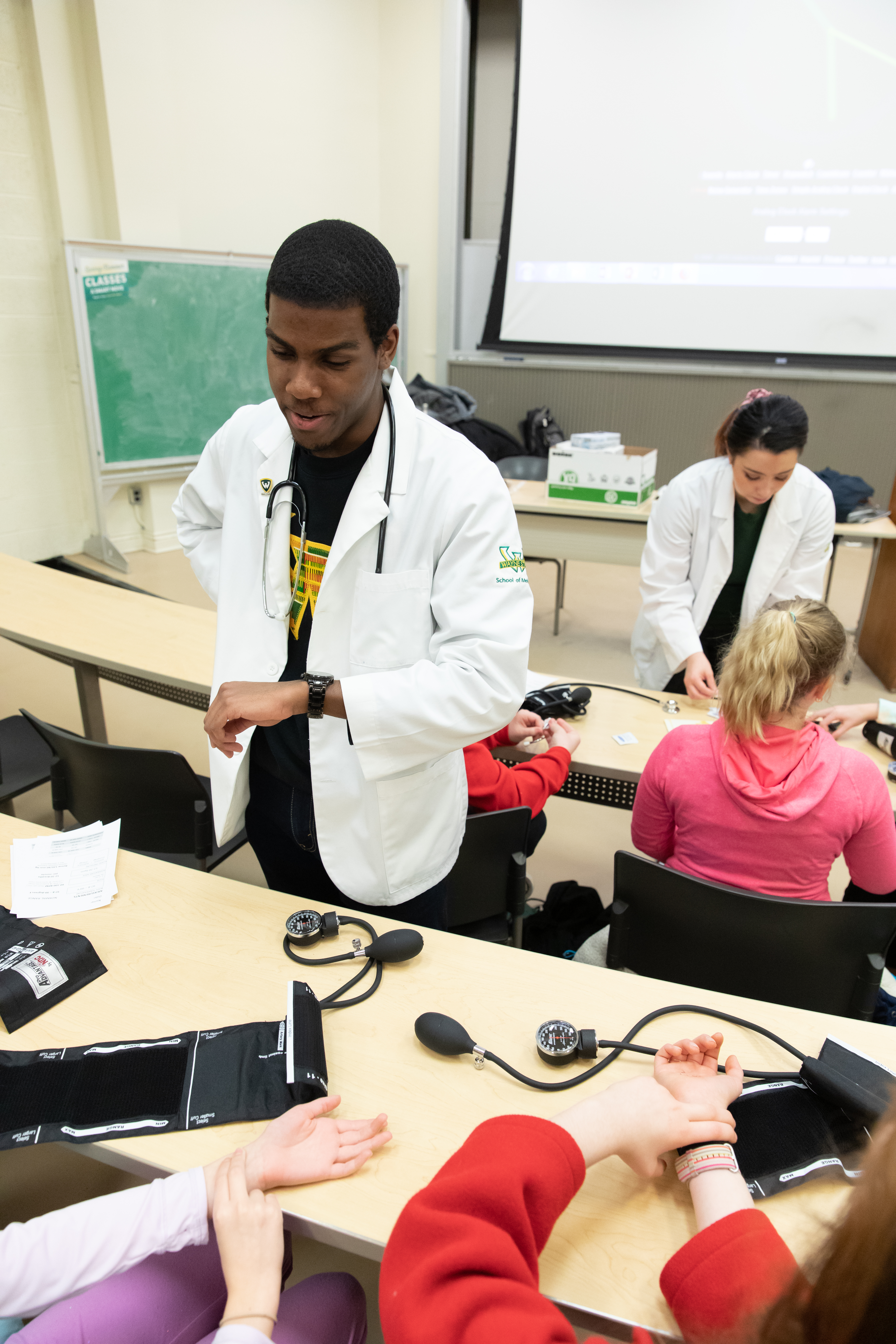
Meanwhile, there is also the Center for Excellence and Equity in Mathematics, which was chartered at WSU in 2007. While the center is best known for the globally respected Math Corps program that has been a rousing success among the 6th grade through 12th grade students it targets, the center is also home to a number of math programs aimed at current WSU students, including the Pre-Emerging Scholars Program, the Emerging Scholars Program (ESP) and the Rising Scholars Program.
The center boasts impressive results. In ESP honors pre- calculus and calculus courses, for instance, the minority pass rate is 82%. Overall, the pass rate for all ESP students is 89%.
Steven Kahn, founder and director of the center, said the programs have seen dramatic results over the past 25 years: “ESP essentially has closed the achievement gap. So the difference between all students and minority students is incredibly small compared to what it usually is.”
Sustaining momentum
Given these achievements, STEM leaders at Wayne State are optimistic that their sustained, head-on effort to improve STEM learning, combat discrimination and broaden access will ensure that the university’s impact on science, technology and related fields resounds for many years to come.

Talk with students like Tarrin Dewberry, an 11th grade student at Detroit Renaissance High who participates in the SMASH program, and you get a strong sense of why that optimism abounds. Dewberry harbors a deep passion for multiple fields of science and plans to apply her STEM education to social justice causes and improving the world around her.
“Chemistry, physics, biology — I like all of those,” explained Dewberry. “Because STEM is a major part of life. And when it comes to making big decisions, you want diversity in those fields of research and study because they are going to affect everybody’s lives.
“This year, my class is talking about contamination. We want to create a way to reduce contamination or even prevent it. We can’t just put that in the hands of just one group of people because it affects all of us. I want to know more about issues affecting my community so I can use information to not only spread awareness about a problem but create solutions.”
And for the scientists who’ve preceded Dewberry, clearing hurdles for the thousands of aspiring physicists and chemists like her is much of what motivates their work today, both in and out of the laboratory.
“One of the promises of now is that, for better or for worse, we are actively talking about the bias, about the prejudice, about the hostility that is out there,” said Matthews. “These conversations could really accelerate our ability to diversify and include in these fields — and I always like to remind folks that these students are the best of the best, the smartest of the smart. When you come out of Wayne State with an engineering degree, computer science degree, information tech — whatever it is that you come out with — you are one of the best of the best. You’re one of the smartest of the smart. You can problem solve. You can problem identify. You can do cost-benefit analysis.
“You can change the world.”
This story originally appeared in the Fall 2019 issue of Warriors magazine.